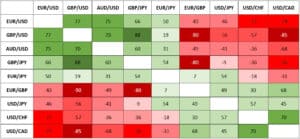Forex trading, or foreign exchange trading, is the global marketplace for buying and selling currencies. Traders engage in forex trading to capitalize on fluctuations in currency exchange rates. One crucial aspect of successful trading is choosing the right trading style that aligns with one’s risk tolerance, time commitment, and market knowledge. There are various forex trading styles, each with its own set of advantages and disadvantages. In this article, we will explore and analyze the pros and cons of different forex trading styles.
Scalping
Scalping is a short-term trading style that aims to capitalize on small price movements. Scalpers open and close positions within minutes, making numerous trades throughout the day. The primary advantage of scalping is the potential for quick profits. Since trades are held for a short duration, scalpers are less exposed to overnight market risks. However, the disadvantages include the need for intense focus, quick decision-making, and the potential for increased transaction costs due to frequent trades.
Day Trading
Day trading involves opening and closing positions within a single trading day, avoiding overnight exposure to market fluctuations. Day traders analyze short-term price movements, using technical analysis and chart patterns to make trading decisions. The main advantage is the avoidance of overnight risks, and day traders can capitalize on intraday market volatility. However, day trading requires a significant time commitment, continuous monitoring of the markets, and can lead to emotional stress.
Swing Trading
Swing trading aims to capture price swings or “swings” in the market over a period of days to weeks. This trading style is less time-intensive compared to scalping or day trading, making it suitable for individuals with busy schedules. Swing traders use technical analysis and fundamentals to identify potential trends and reversals. The advantages include more relaxed decision-making, reduced stress, and the ability to hold positions overnight. On the downside, swing trading may involve larger stop-loss orders, exposing traders to overnight risks.
Position Trading
Position trading is a long-term strategy where traders hold positions for weeks, months, or even years. This style is based on a fundamental analysis of currency pairs, economic trends, and global events. Position traders aim to capitalize on long-term trends and market cycles. The primary advantage of position trading is reduced stress and time commitment, allowing traders to maintain a full-time job or other activities. However, the drawbacks include the need for substantial initial capital, as well as the potential for significant drawdowns during adverse market conditions.
Automated Trading
Automated trading, also known as algorithmic or robotic trading, involves using computer programs to execute trades based on predefined criteria. These algorithms can analyze market data, execute orders, and manage risk without human intervention. The advantages of automated trading include the elimination of emotional bias, the ability to backtest strategies, and the potential for 24/7 trading. However, disadvantages include the risk of technical glitches, over-optimization, and the need for continuous monitoring and updates to adapt to changing market conditions.
Copy Trading
Copy trading allows individuals to replicate the trades of successful and experienced traders. This style is suitable for those who lack the time or expertise to actively trade. The main advantage is the ability to benefit from the knowledge and expertise of seasoned traders. However, the risks include the potential for losses if the copied trader incurs losses, limited control over individual trades, and the need to choose reliable and transparent copy trading platforms.
In conclusion, the choice of a forex trading style depends on an individual’s preferences, risk tolerance, and time commitment. Each trading style has its own set of advantages and disadvantages. Scalping and day trading offer quick profits but require intense focus and time dedication. Swing trading provides a balance between short-term and long-term strategies, while position trading is ideal for those with a more relaxed approach and long-term vision. Automated and copy trading offer alternatives for individuals who prefer a more hands-off approach. Ultimately, successful forex trading requires a thorough understanding of the chosen style, disciplined risk management, and the ability to adapt to changing market conditions. Traders should carefully assess their goals and preferences before selecting a trading style that aligns with their overall strategy and financial objectives.
Let’s Manage Your Forex Funds With Fx Pips Guru!
Fx Pips Guru is a forex fund management company managing client’s funds based on monthly profit share. Let’s do Live Chat with our experts.




